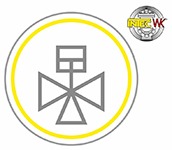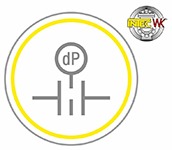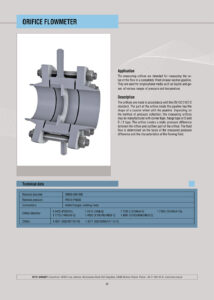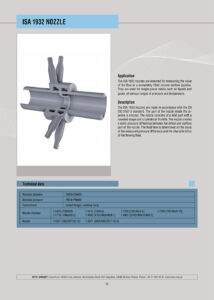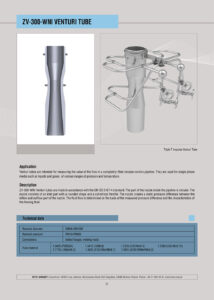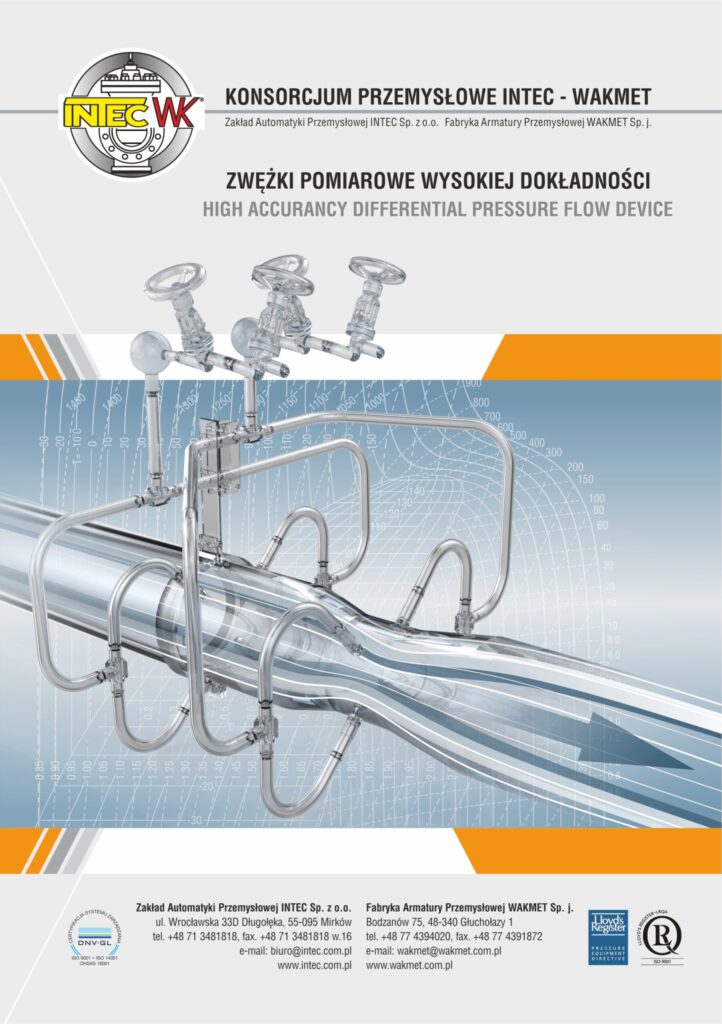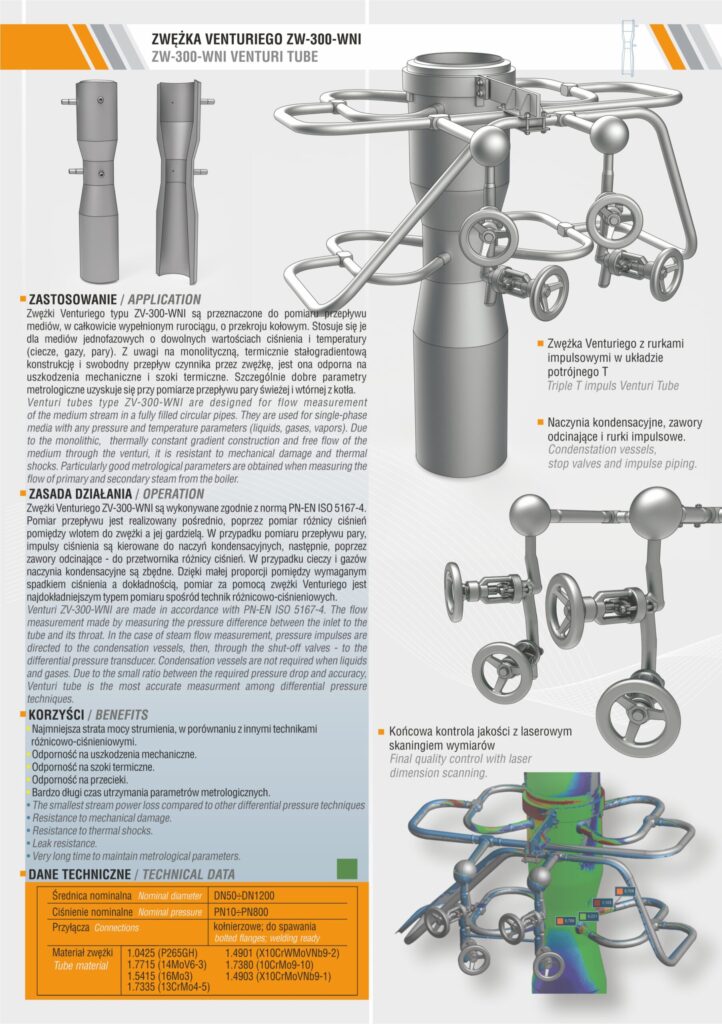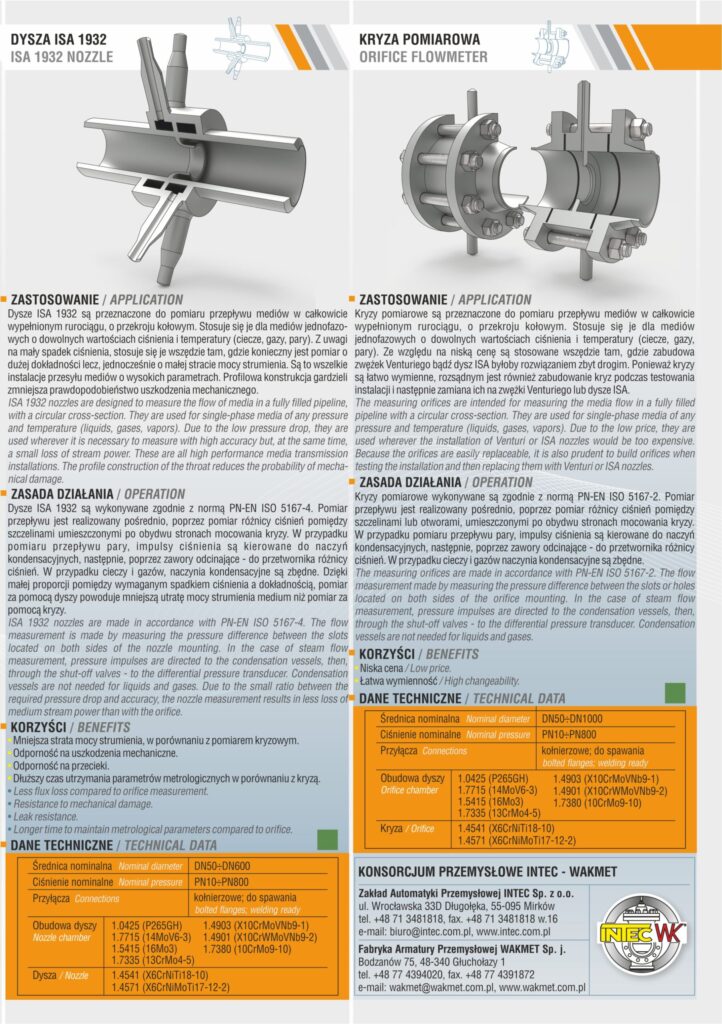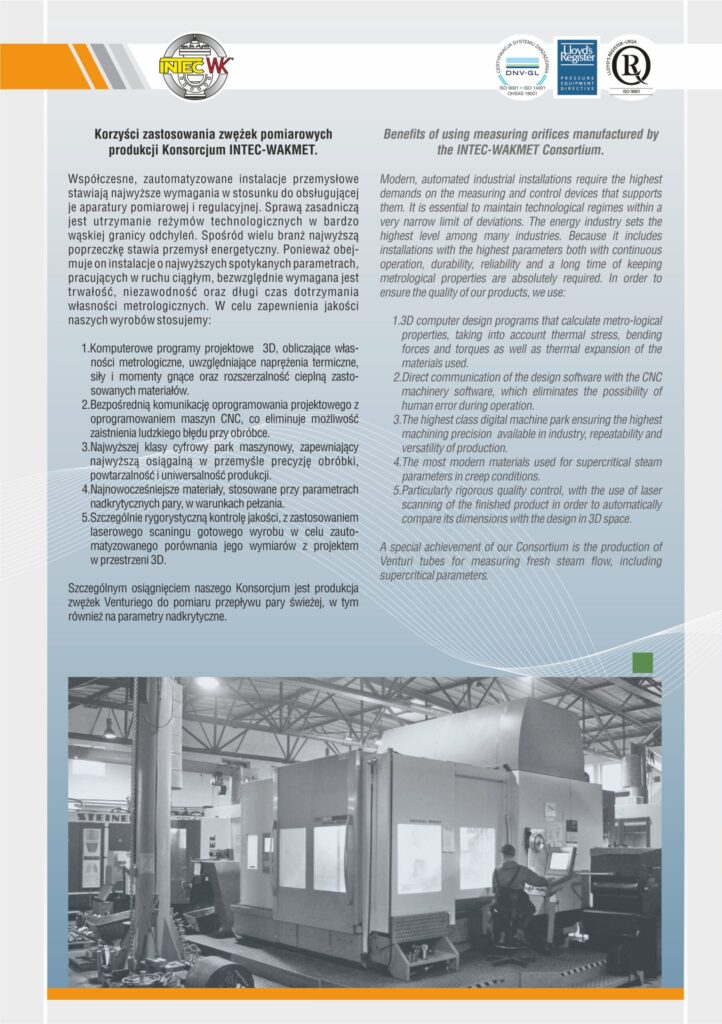DIFFERENTIAL PRESSURE FLOW ELEMENTS
Application:
Orifice plates are intended for determining the fluid flow rate in a fully filled circular pipeline. They are used for single-phase media with any pressure and temperature parameters (liquids, gases, vapors, oils).
Design and principle of operation:
Orifice plates are manufactured according to the PN-EN ISO 5167-2 standard. The part of the orifice plate located inside the pipeline is shaped as a circle that is coaxial with the pipeline. Depending on the method of pressure tapping, orifice plates may have flange pressure tappings, corner pressure tappings, or D and D/2 pressure tappings. The orifice plate creates a static differential pressure between the upstream and downstream sections. The fluid flow rate is determined based on the measured differential pressure and the characteristics of the flowing fluid.
Application:
ISA 1932 nozzles are intended for determining the fluid flow rate in a fully filled circular pipeline. They are used for single-phase media with any pressure and temperature parameters (liquids, gases, vapors, oils).
Design and principle of operation:
ISA 1932 nozzles are manufactured according to the PN-EN ISO 5167-3 standard. The part of the nozzle located inside the pipeline has a circular shape. The nozzle consists of a converging section with a rounded shape and a cylindrical throat. The nozzle creates a static differential pressure between the upstream section and the throat. The fluid flow rate is determined based on the measured differential pressure, the characteristics of the flowing fluid, and the operating conditions.
Application:
Venturi tubes type ZV-300-WNI are intended for determining the fluid flow rate in a fully filled circular pipeline. They are used for single-phase media with any pressure and temperature parameters (liquids, gases, vapors, oils).
Design and principle of operation:
Venturi tubes ZV-300-WNI are manufactured according to the PN-EN ISO 5167-4 standard. The Venturi tube consists of a cylindrical inlet section connected to a conical converging section, a cylindrical throat, and a conical diverging section. The Venturi tube creates a static differential pressure between the upstream section and the throat. The fluid flow rate is determined based on the measured differential pressure and the characteristics of the flowing fluid.




